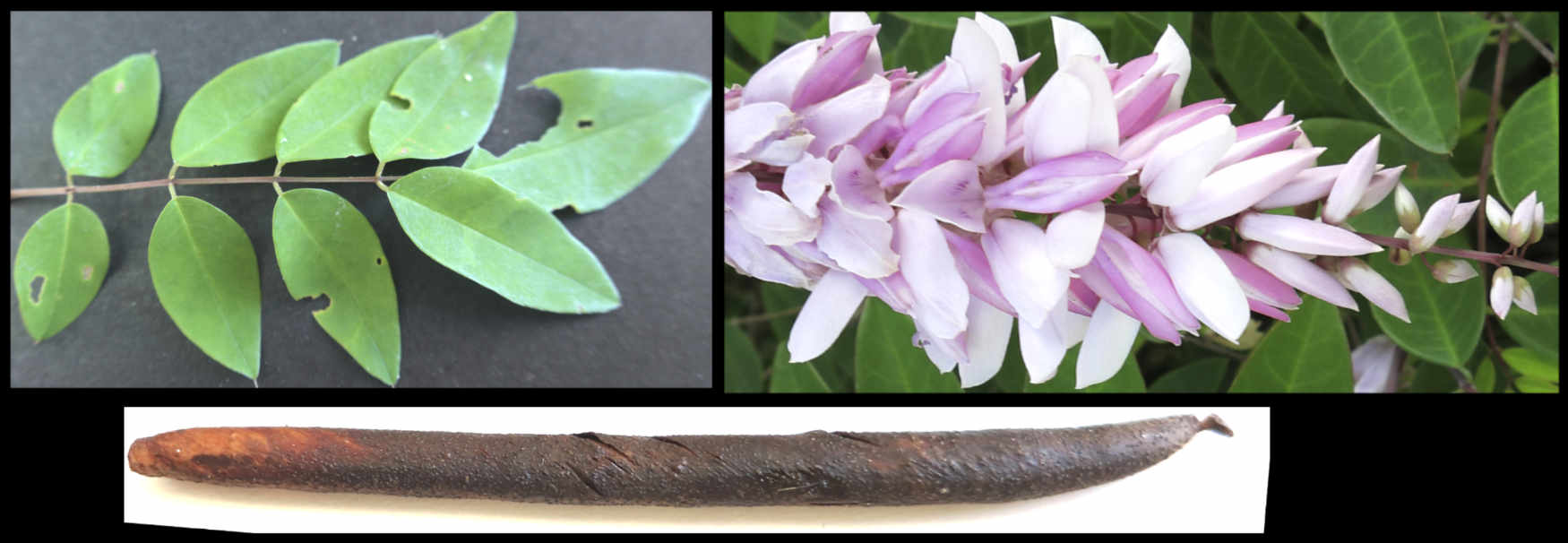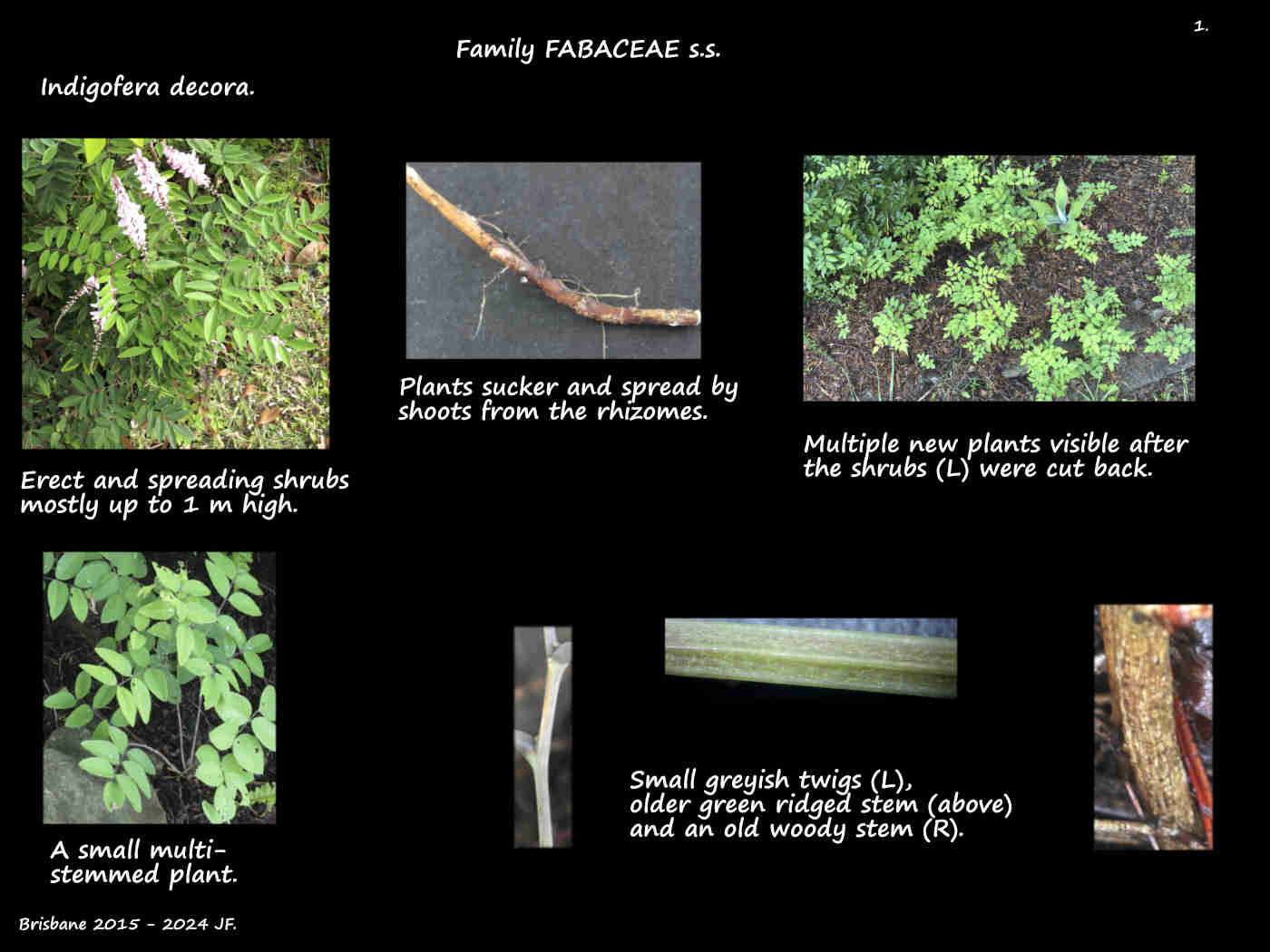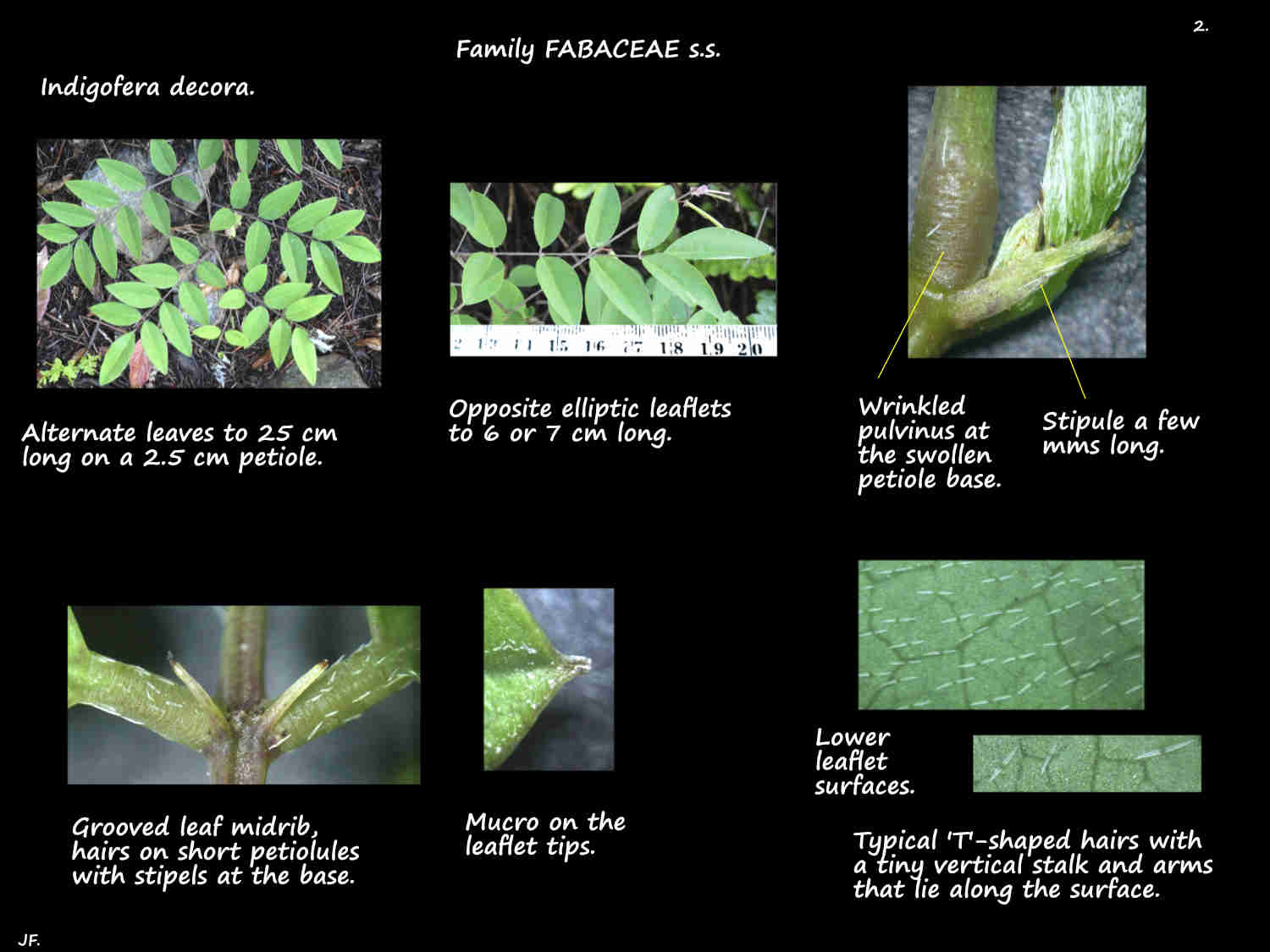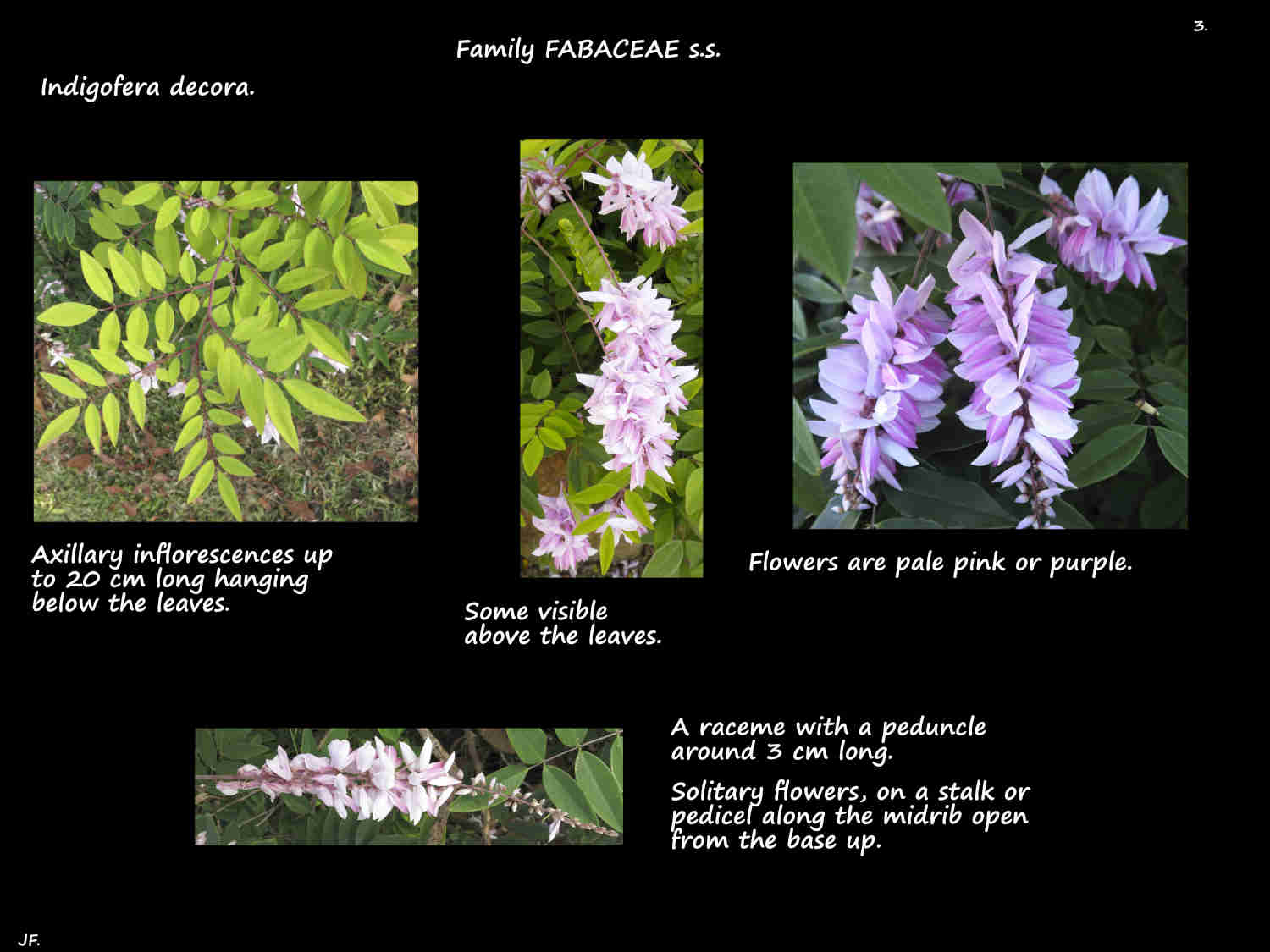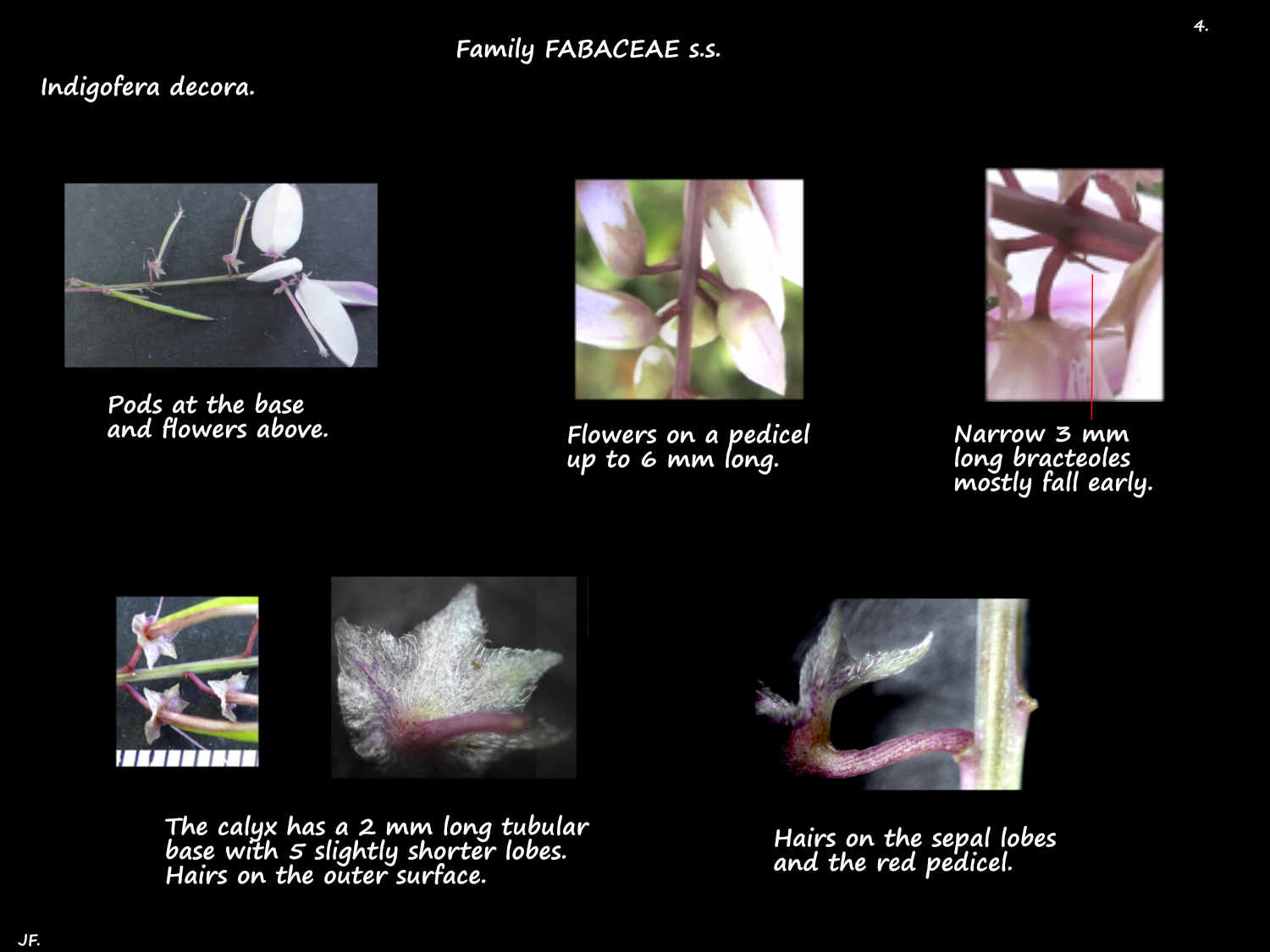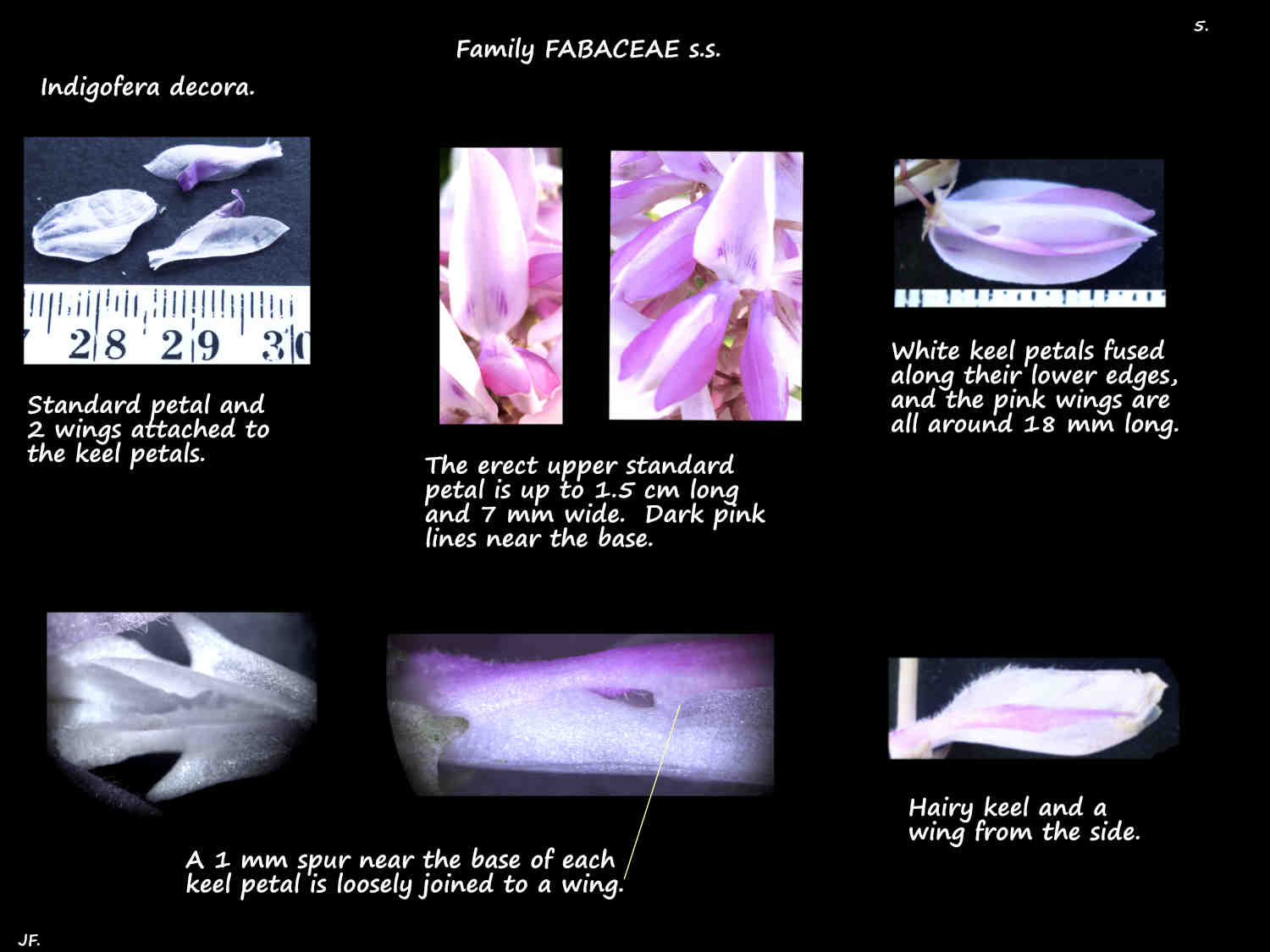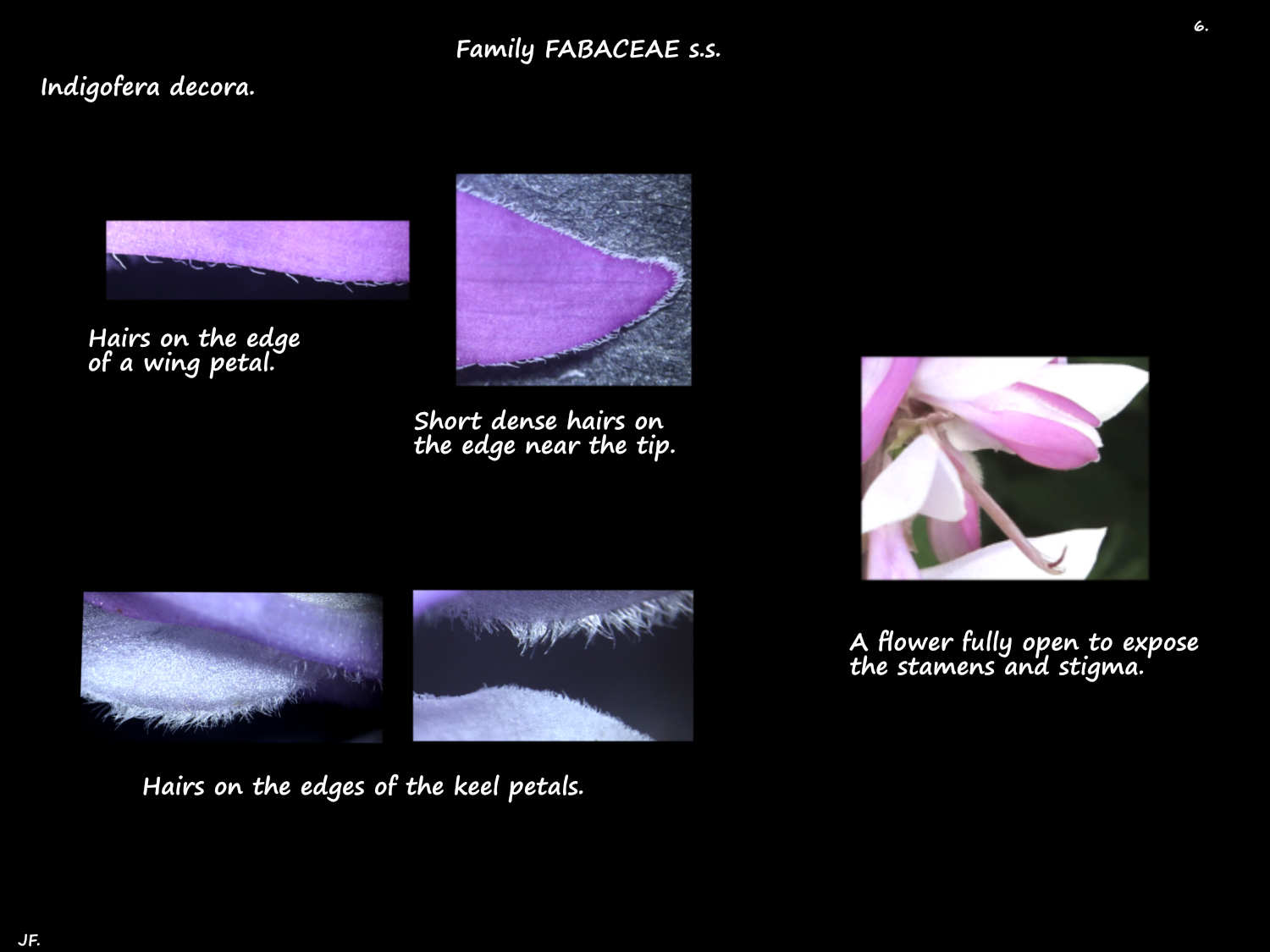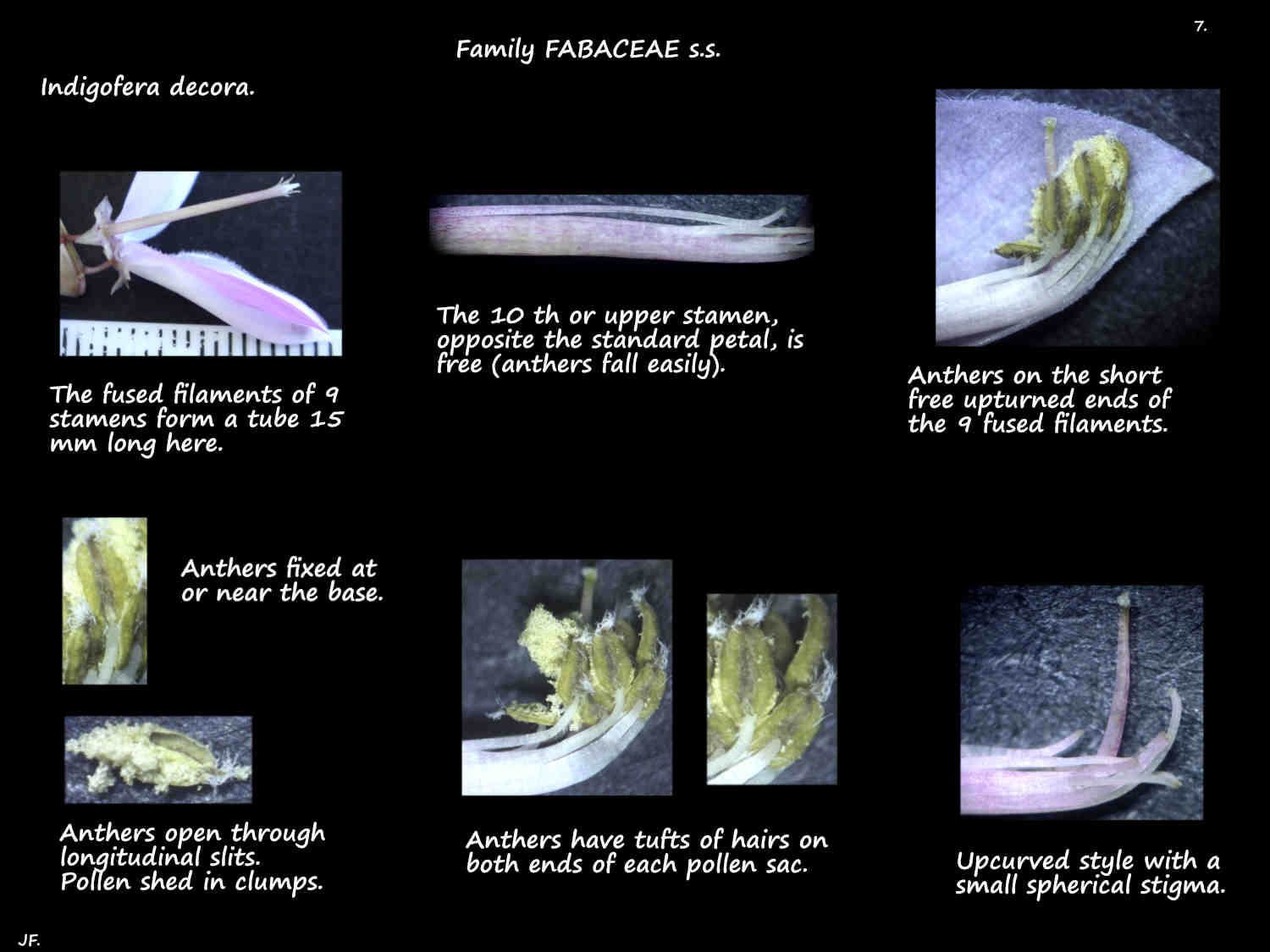Indigofera decora.
Summer wisteria is in Family Fabaceae > Subfamily Faboideae.
Native to China and Japan it is a common garden plant in Australia.
The erect, spreading shrubs are usually under 1 m high but can be up to 2 m.
The numerous branching stems grow from woody rhizomes (underground stems).
Young green stems are cylindrical, slightly ridged and older ones are woody.
Greyish twigs may have hairs that lie flat along the surface.
These, and hairs on other parts are typically ‘T’-shaped with a very short vertical stalk and 2 branches that lie along the surface.
The alternate leaves, up to 25 cm long are on a petiole up to 2.5 cm long.
The petiole and leaf midrib may have a few branched hairs.
The narrow triangular stipules, a few mms long fall off early.
The leaves are compound with 9 to 11 (5 to 23) leaflets.
Leaflets are opposite but very occasionally alternate at the base of the leaf.
Leaflets are on a petiolule around 2 mm long with slightly shorter stipels at the base.
The elliptic, oblong or ovate leaflets are up to around 6.5 cm long and 3.5 cm wide.
The tip is pointed (occasionally rounded) with a mucro (small abrupt point).
The upper surfaces have no or a few hairs.
The lower surfaces have dense white ‘T’-shaped hairs.
Inflorescences are a raceme up to 20 cm long with a peduncle around 3 cm long.
Each raceme has up to 40 pea-shaped flower on pedicels up to 6 mm long.
The narrow 3 mm bracts fall off.
The cup-shaped calyx has a tubular base 2 mm long with 1.5 to 2 mm long teeth on the rim.
There may be ‘T’-shaped hairs on the outer surface.
The corolla has the usual 5 pea-like petals with the upper elliptic standard being around 1.5 cm long.
The 2 side wings, 1.3 cm long have short hairs on the edges.
The 2 erect keel petals are fused along their lower surfaces.
Near the base of each is a 1 mm spur that is loosely fused to a wing.
There may be some white or brown hairs on the outer surfaces.
Petals are pink or pale purple.
Nine stamens, around 1.3 cm long are fused into a tube with the 10th free.
The anthers have hairs on both ends.
The hairless superior ovary has numerous ovules in the single locule.
The fruit are a straight, cylindrical legume or pod up to 7 cm long.
They have up to 10 ellipsoid seeds.
Varieties are differentiated by the number of leaflets and the presence of ‘T’-shaped hairs.
I. decora var. chalara has 5-9 leaflets with hairs on both sides.
I. decora var. changensis has 9-13 leaflets with hairs on both sides.
I. decora var. decora has 13-19 leaflets with hairs only on the lower surface.
In. decora var. cooperi has 13-23 leaflets with hairs on both sides.
There is also a rare white form.
J.F.
